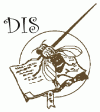



Potter, J.H. 1999. A demonstration of compensation for an inherited biochemical defect in D. melanogaster.
Dros. Inf. Serv. 82: 123. View PDF
Moree, Ray, and Donald T. Grahn. 1999. Demonstration of intra- and inter-chromosomal effects of inversions on crossing over.
Dros. Inf. Serv. 82: 123. View PDF
A simple demonstration of compensation for an inherited biochemical defect can be carried out by beginning students using D. melanogaster. In essence, students supply kynurenine to larvae of vermilion mutants which cannot convert tryptophan to kynurenine, one of the steps in the synthesis of ommochrome pigments. Since students frequently do not distinguish vermilion from wild type flies, they use the white-eyed, double mutant, vermilion brown. Vermilion brown larvae fed kynurenine develop brown eyes. To emphasize the specificity of the block, students also feed kynurenine to the double mutant, cinnabar brown. Cinnabar brown mutants develop white eyes whether or not they receive kynurenine.
Experimental procedure: Students set up two cultures each of vermilion brown and cinnabar brown mutants in 80 ´ 25 mm shell vials containing 5 ml of Carolina Instant Drosophila Medium. As soon as larvae appear, the parents are removed and the medium in one vial of each genotype is injected with 0.2 ml of a kynurenine-antibiotic solution. The medium in the other two vials is injected with 0.2 ml of plain antibiotic solution. The injections are made with a 2 1/2 ml syringe without a needle inserted in a hole made in the medium with an applicator stick. Injections are repeated every two days until pupae appear. The adults are scored in the usual way. The kynurenine treated, vermilion brown, flies are mated after scoring and their progeny scored for eye color to demonstrate that the genotype has not been changed by the kynurenine treatment.
The kynurenine antibiotic solution is similar to that used by Parsons and Green (1959) for culturing eye discs: 0.05% streptomycin, 0.033% penicillin and 1.00% D.L. kynurenine, which can be obtained from Sigma Chemical Company, St. Louis, Missouri.
References: Parsons, P.A., and M.M. Green 1959, Proc. Nat. Acad. Sci., USA 45: 993.
The following experiment must be in use in many teaching laboratories, yet I do not recall any mention of it during conversation. It may therefore be worth a note since it adds an interesting contrast to the types of experiments traditionally in use. Using the stocks y w, In(1)y,In(1)w (see DIS 35:7), Cy/Pm;D/Sb, and any wild type stock, F1 females of the following four types are produced: (1) y w/++;+/+;+/+, (2) In(1)y,In(1)w/++;+/+;+/+, (3) y w/++;Cy/+;D/+, and (4) In(1)y,In(1)w/++; Cy/+;D/+. These females are then crossed to y w males. As carried out by the class the crosses have given, respectively, the following percentages of crossing over between y and w: 1.5, 0.3, 8.1, and 2.4. Some students often fail to identify D in selecting F1 females, so the maximum enhancing effect is probably greater than that obtained. Results are clear cut and can be appreciated without resort to a statistical test. The experiments are easily performed and yet introduce an aspect of genetics quite novel to beginning students. That no satisfactory explanation exists for the increase in crossing over is disappointing to some students but intriguing to others.